
How to Use 4G HAT for Raspberry Pi - LTE Cat-4/3G/2G with GNSS Positioning: Examples, Pinouts, and Specs
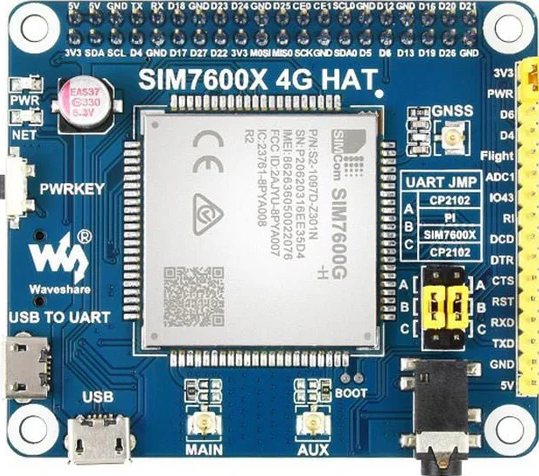
 Design with 4G HAT for Raspberry Pi - LTE Cat-4/3G/2G with GNSS Positioning in Cirkit Designer
Design with 4G HAT for Raspberry Pi - LTE Cat-4/3G/2G with GNSS Positioning in Cirkit DesignerIntroduction
The 4G HAT for Raspberry Pi (SIM7600X) is a versatile hardware add-on designed to provide cellular connectivity and GNSS positioning capabilities to Raspberry Pi projects. This HAT supports LTE Cat-4, 3G, and 2G networks, enabling high-speed data communication and reliable location tracking. It is ideal for IoT applications, remote monitoring, vehicle tracking, and other projects requiring mobile connectivity and GPS functionality.
Explore Projects Built with 4G HAT for Raspberry Pi - LTE Cat-4/3G/2G with GNSS Positioning
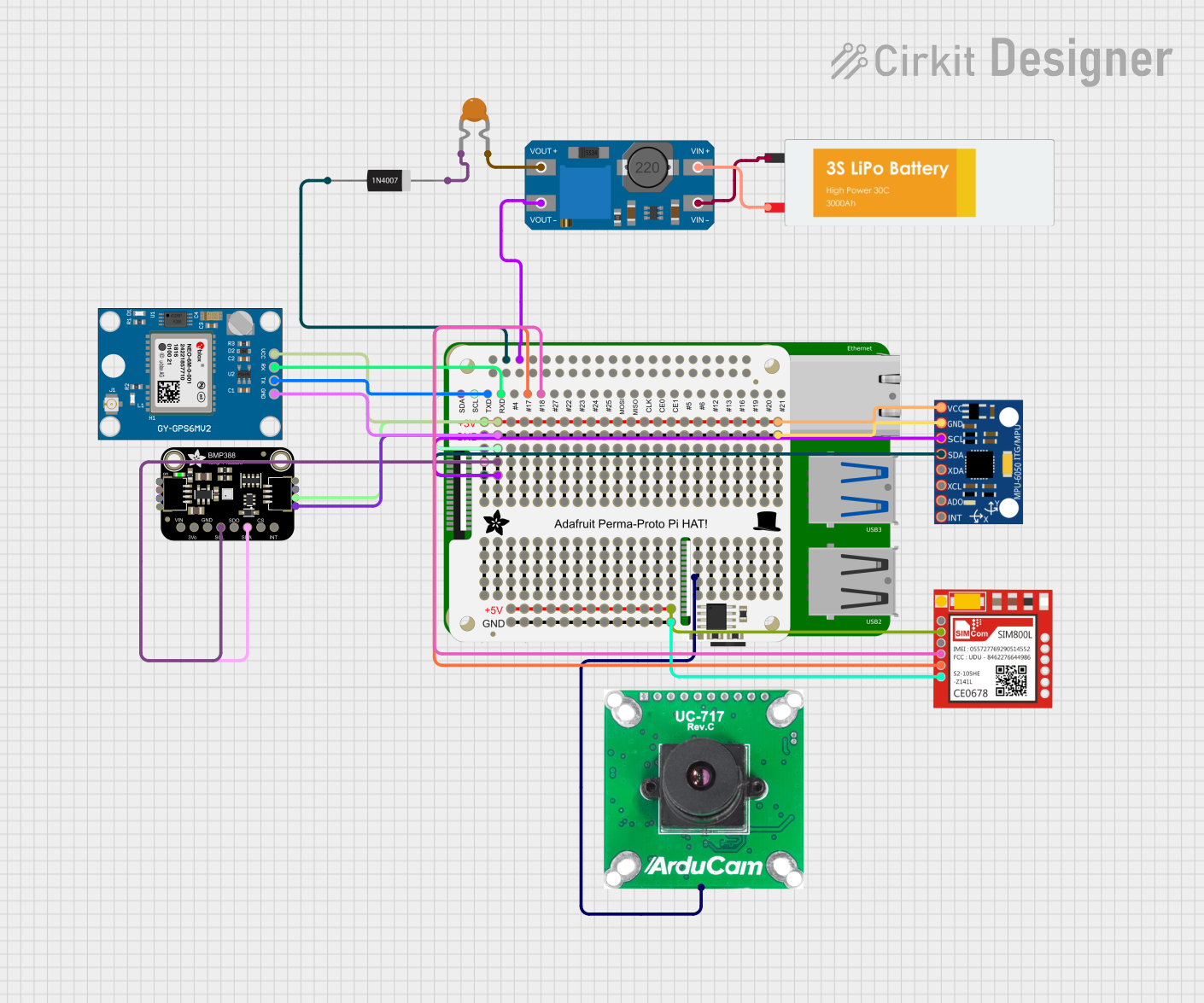
 Open Project in Cirkit Designer
Open Project in Cirkit Designer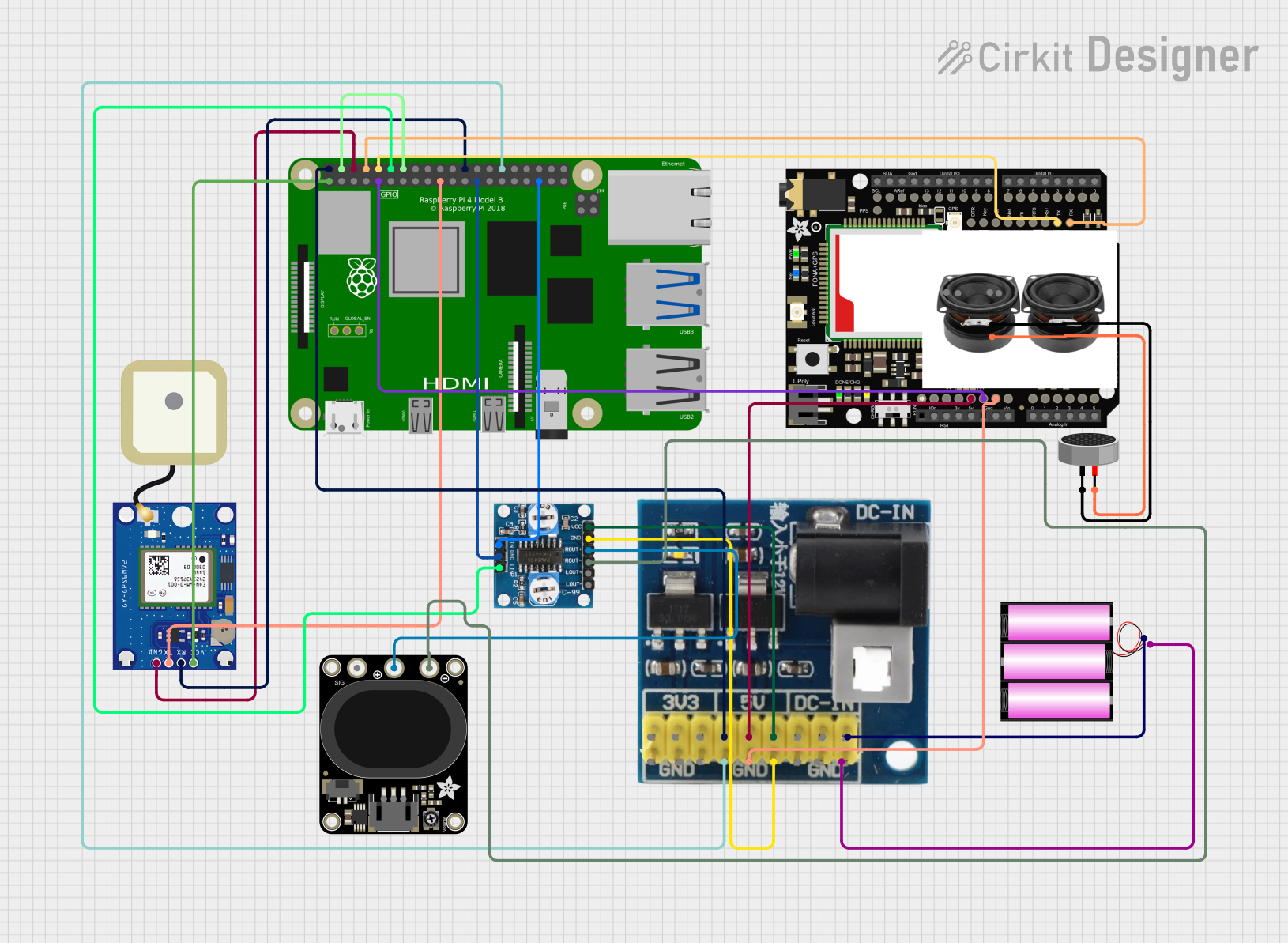
 Open Project in Cirkit Designer
Open Project in Cirkit Designer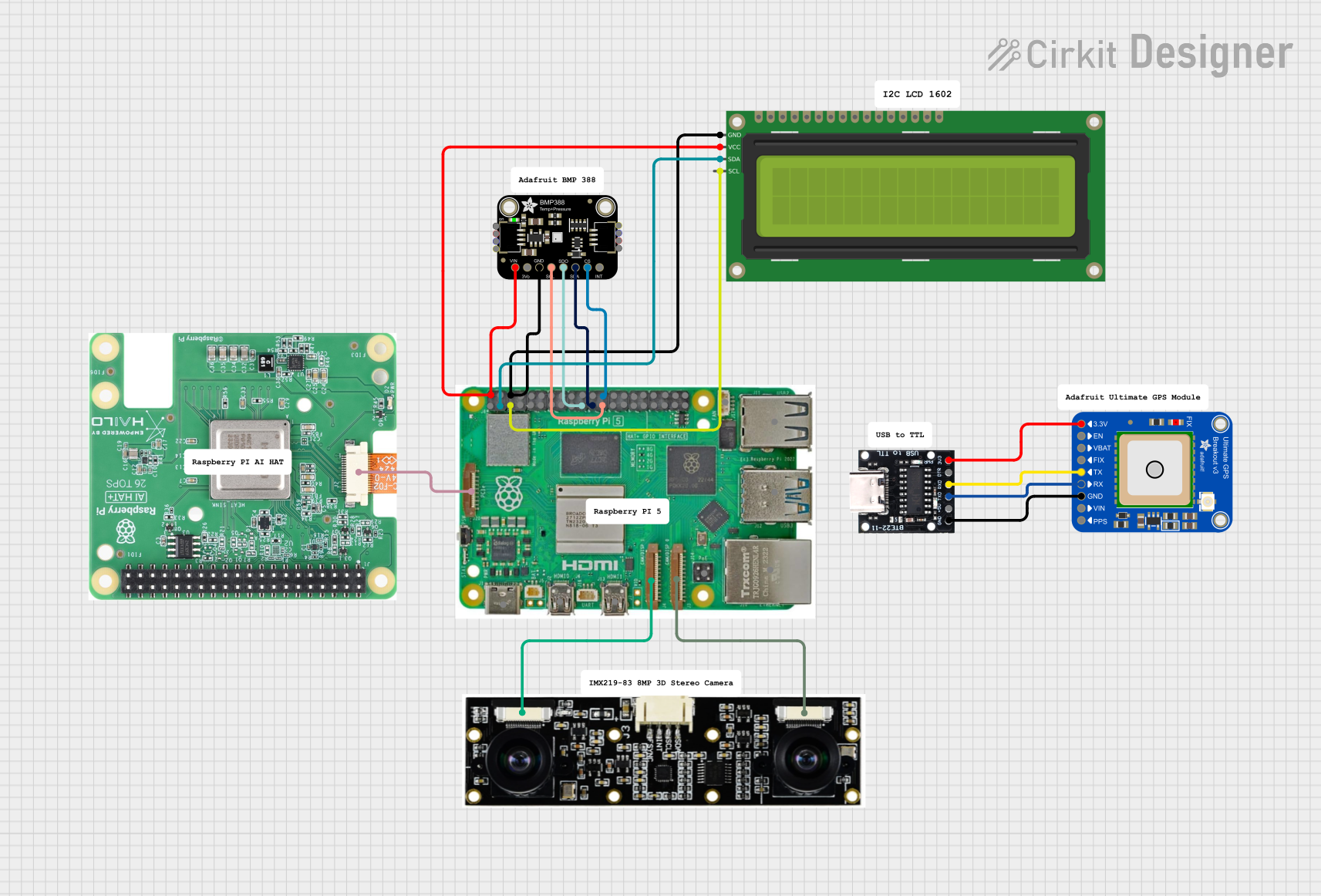
 Open Project in Cirkit Designer
Open Project in Cirkit Designer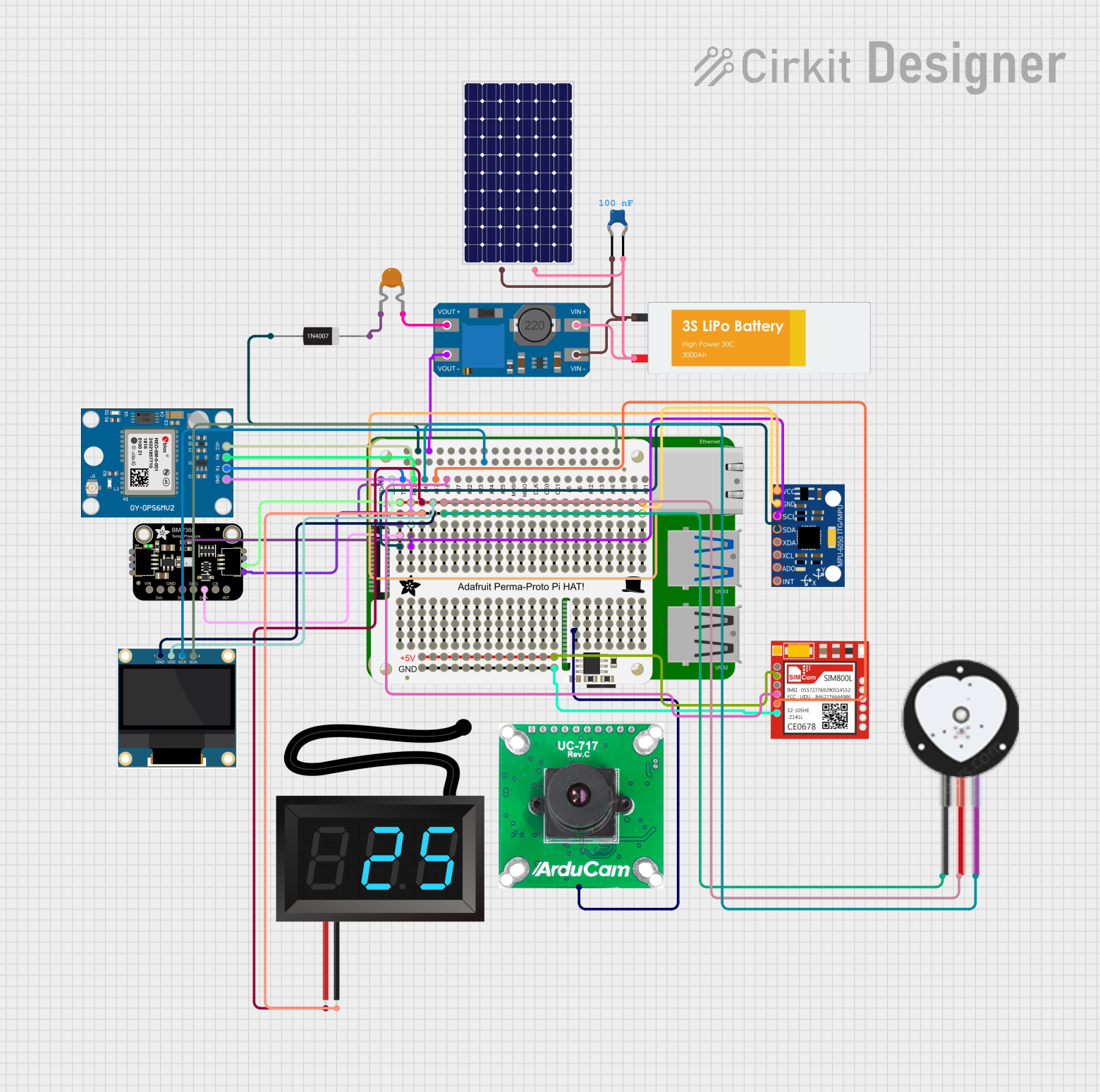
 Open Project in Cirkit Designer
Open Project in Cirkit DesignerExplore Projects Built with 4G HAT for Raspberry Pi - LTE Cat-4/3G/2G with GNSS Positioning

 Open Project in Cirkit Designer
Open Project in Cirkit Designer
 Open Project in Cirkit Designer
Open Project in Cirkit Designer
 Open Project in Cirkit Designer
Open Project in Cirkit Designer
 Open Project in Cirkit Designer
Open Project in Cirkit DesignerCommon Applications and Use Cases
- IoT devices requiring cellular connectivity
- GPS-based location tracking and navigation
- Remote data logging and monitoring
- Smart transportation systems
- Mobile internet access for Raspberry Pi projects
Technical Specifications
Key Technical Details
- Manufacturer: Pi
- Part ID: SIM7600X
- Cellular Network Support: LTE Cat-4, 3G, 2G
- GNSS Support: GPS, GLONASS, BeiDou, Galileo, QZSS
- Data Rates:
- LTE: Up to 150 Mbps (downlink), 50 Mbps (uplink)
- 3G: Up to 42 Mbps (downlink), 5.76 Mbps (uplink)
- Operating Voltage: 5V (via Raspberry Pi GPIO or external power supply)
- Power Consumption:
- Idle: ~20 mA
- Active (LTE): ~500 mA (peak ~2A)
- Operating Temperature: -40°C to +85°C
- Communication Interfaces: UART, USB, GPIO
- Antenna Interfaces: Cellular (Main, Div), GNSS
- SIM Card Slot: Nano-SIM (1.8V/3V)
Pin Configuration and Descriptions
The 4G HAT connects to the Raspberry Pi via the GPIO header. Below is the pin configuration:
| Pin | Name | Description |
|---|---|---|
| 2 | 5V | Power supply (5V input) |
| 6 | GND | Ground |
| 8 | TXD (UART) | UART Transmit (to Raspberry Pi RXD) |
| 10 | RXD (UART) | UART Receive (to Raspberry Pi TXD) |
| 12 | PWRKEY | Power key for module control |
| 16 | NET_STATUS | Network status indicator |
| 18 | GNSS_EN | Enable GNSS functionality |
| 22 | RESET | Reset the module |
Usage Instructions
How to Use the Component in a Circuit
Hardware Setup:
- Attach the 4G HAT to the Raspberry Pi GPIO header.
- Connect the provided LTE and GNSS antennas to the respective SMA connectors on the HAT.
- Insert a Nano-SIM card into the SIM card slot.
- Power the Raspberry Pi using a reliable 5V/3A power supply to handle the HAT's peak current requirements.
Software Setup:
- Install the required drivers and libraries for the SIM7600X module. On Raspberry Pi OS, use the following commands:
sudo apt update sudo apt install ppp minicom - Configure the PPP (Point-to-Point Protocol) for cellular internet access.
- Install the required drivers and libraries for the SIM7600X module. On Raspberry Pi OS, use the following commands:
GNSS Positioning:
- Enable GNSS by setting the
GNSS_ENpin high. - Use serial communication to retrieve GNSS data from the module.
- Enable GNSS by setting the
Important Considerations and Best Practices
- Ensure the Raspberry Pi is powered by a high-quality power supply to avoid voltage drops during peak current usage.
- Place the antennas in an open area for optimal signal reception.
- Use proper ESD precautions when handling the HAT to prevent damage to sensitive components.
- For high-speed data communication, connect the HAT to the Raspberry Pi via USB instead of UART.
Example Code for Arduino UNO
Although this HAT is designed for Raspberry Pi, it can also be used with an Arduino UNO via UART. Below is an example code snippet to send AT commands to the SIM7600X module:
#include <SoftwareSerial.h>
// Define RX and TX pins for SoftwareSerial
SoftwareSerial sim7600x(10, 11); // RX = pin 10, TX = pin 11
void setup() {
Serial.begin(9600); // Initialize Serial Monitor
sim7600x.begin(9600); // Initialize SIM7600X communication
Serial.println("Initializing SIM7600X...");
delay(1000);
// Send an AT command to check communication
sim7600x.println("AT");
}
void loop() {
// Check for data from SIM7600X
if (sim7600x.available()) {
String response = sim7600x.readString();
Serial.println("SIM7600X Response: " + response);
}
// Check for user input from Serial Monitor
if (Serial.available()) {
String command = Serial.readString();
sim7600x.println(command); // Send user command to SIM7600X
}
}
Troubleshooting and FAQs
Common Issues and Solutions
No Cellular Network Detected:
- Ensure the SIM card is properly inserted and has an active data plan.
- Check the antenna connections and place them in an area with good signal coverage.
- Verify the
NET_STATUSpin output for network status.
GNSS Not Working:
- Ensure the GNSS antenna is connected and placed in an open area with a clear view of the sky.
- Confirm that the
GNSS_ENpin is set high to enable GNSS functionality.
Module Not Responding to AT Commands:
- Verify the UART or USB connection between the Raspberry Pi and the HAT.
- Check the power supply to ensure the module is receiving sufficient current.
- Reset the module using the
RESETpin.
High Power Consumption:
- Use a power supply capable of delivering at least 3A to handle peak current requirements.
- Minimize power usage by disabling unused features (e.g., GNSS) when not needed.
FAQs
Can this HAT be used with other microcontrollers? Yes, the SIM7600X module can communicate via UART or USB, making it compatible with other microcontrollers like Arduino and ESP32.
What is the maximum data rate supported? The HAT supports LTE Cat-4 with a maximum downlink speed of 150 Mbps and uplink speed of 50 Mbps.
Does the HAT support voice calls? Yes, the SIM7600X module supports voice calls, but additional configuration is required.
Can I use this HAT for SMS messaging? Yes, the module supports SMS functionality via AT commands.
Is an external power supply required? The HAT can be powered through the Raspberry Pi GPIO header, but an external power supply is recommended for stable operation during high current usage.